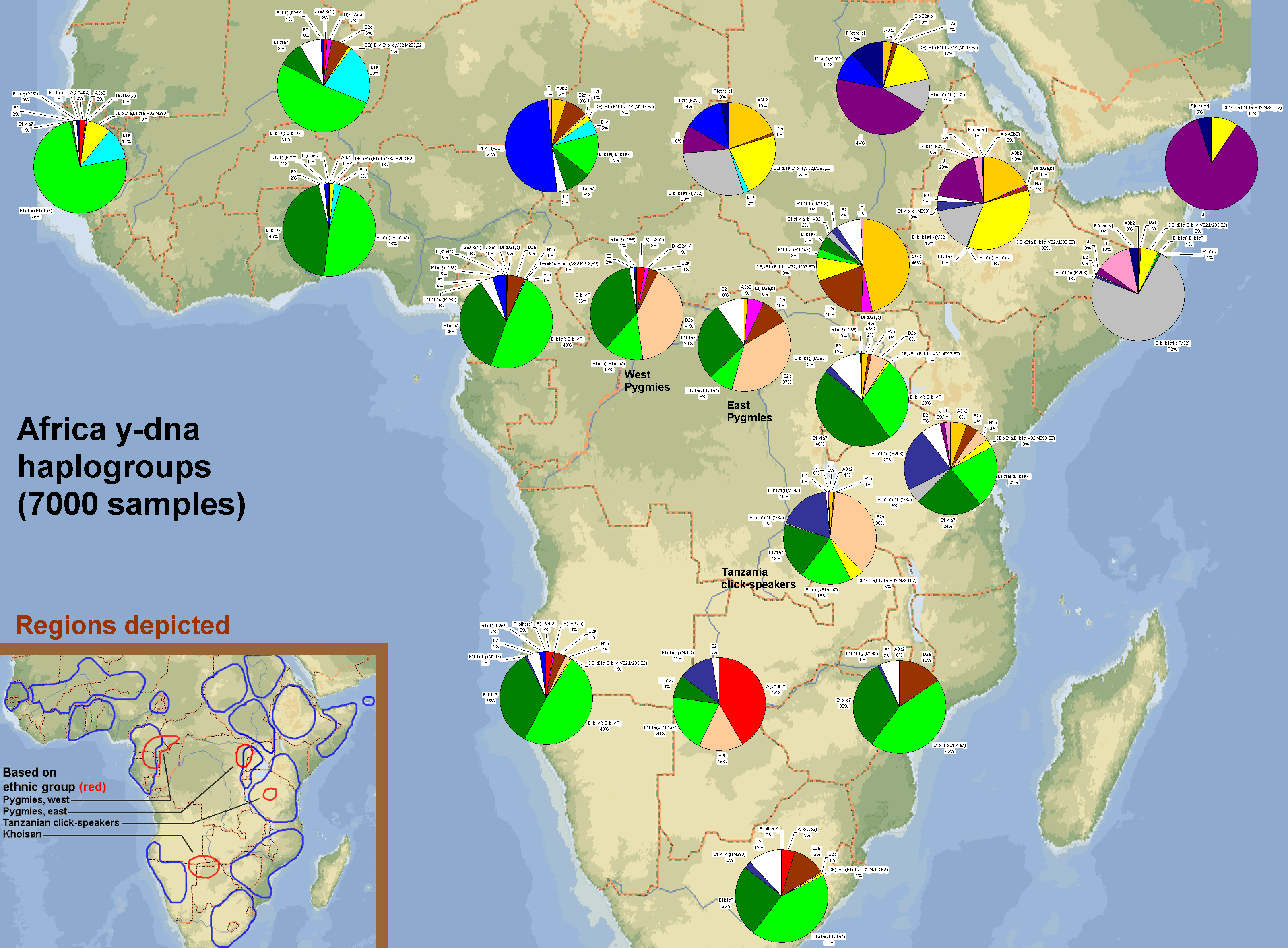Argiedude at Anthroforum has been making a huge effort compiling the available Y-DNA data for Africa south of the Sahara. The following map is the result:
A smaller version can be found HERE (useful for rapid comparisons but the legend is not readable and lacks the locator inset).
I think it is a most interesting piece of info and therefore I reproduce it here with permission.
Source: Anthroforum (you can find the raw data there as well). Author Argiedude.
.











14 comments:
Thanks Maju. An interesting map. I see he bends over backwards to place E's origin in East Africa by claiming the E-V32 mutation occurred there, ignoring the fact that it could have happened anywhere across the southern margin of the Sahel.
Well, as discussed elsewhere, I am of the same opinion, as Y-DNA E would seem to have higher diversity (not fully clear for lack of sufficient study but it's the impression I have anyhow). Also an Eastern E is "convenient" to link with the related Asian lineages.
Whatever the case East/NE Africa needs more and better research.
Oops, I thought you meant E as whole, not E1b1b1a1b.
E1b1b1a1b is located in that area of NE Africa and not found elsewhere, so I wonder why would you argue for any other origin.
"I thought you meant E as whole, not E1b1b1a1b".
I meant what I said: 'the E-V32 mutation'. In the Karafet diagram E-V32 defines haplogroup E1b1b1a1b, very much a downstream mutation. Not surprisingly it's concentrated in just a fairly small region. But in this link the author seems to claim that E-V32 is a basal mutation, defining the whole DE cluster. Which is the currently accepted position? Or is the author simply bending "over backwards to place E's origin in East Africa".
I doubt he claims that. At least I did not understood that. Whatever the case, feel free to discuss with him (it's a forum: you just need to register).
The comment that confused me was:
"I insist that the basal clade is V32 with 438=11, which must have diffused in more ancient times from Ethiopia in every direction. Later, within Ethiopia the original V32 with 438=11 was replaced by a second wave of V32, with 438=12. This second wave has hardly managed to diffuse out of its Ethiopian homeland".
I thought 'basal clade' refered to the whole E haplogroup but I've found what I'd missed further up the page:
"E-V32, painted gray in the graph (Somalia is 3/4 gray), has an interesting subdivision. All Ethiopian V32 have 438=12.
And all Somali V32 have 438=11. [there are a few exceptions in either case] I found haplotype data for 3 Tanzanian
and 1 Ugandan V32, and all 4 of them had 438=11, like the Somali V32".
The comments on DE are interesting:
"but most DE results are from East Africa, and Ethiopia in particular: M215*, M35*, V6, V22, M78* (Sudan), M81 (Somalia)".
M215 defines E1b1b, M35 defines E1b1b1, M81 defines E1b1b1b, V6 defines E1b1b1e, M78 defines E1b1b1a and V22 defines E1b1b1a3. Hardly DE. In they should have been included in other parts of the diagram.
Seriously: discuss that with Argiedude and the others in the forum. They will be able to reply to you much better than I can.
But anyhow, somewhere else, Argidude explained that DE* is mostly E(others) but that he used that category to include also the handful of DE(xD,E) findings in West Africa.
Yes, there is a noticeable and ill studied R1b* amount among certain African groups, specially among Chadic speakers of North Cameroun, in Sudan and also Egypt. Probably the origin of this lineage is at the Nile, even if it's more common (founder effect) near Lake Chad.
Other small amounts of R1b in coastal Africa may be from the colonial period.
We can see that Africa = Haplogroup E...
Don't forget A and B, but sure E is totally dominant except in some forager groups with very old roots (Pygmies, Bushmen, Hadza...)
Comment above deleted because of the obvious and offensive racist attitude of the author.
Post a Comment